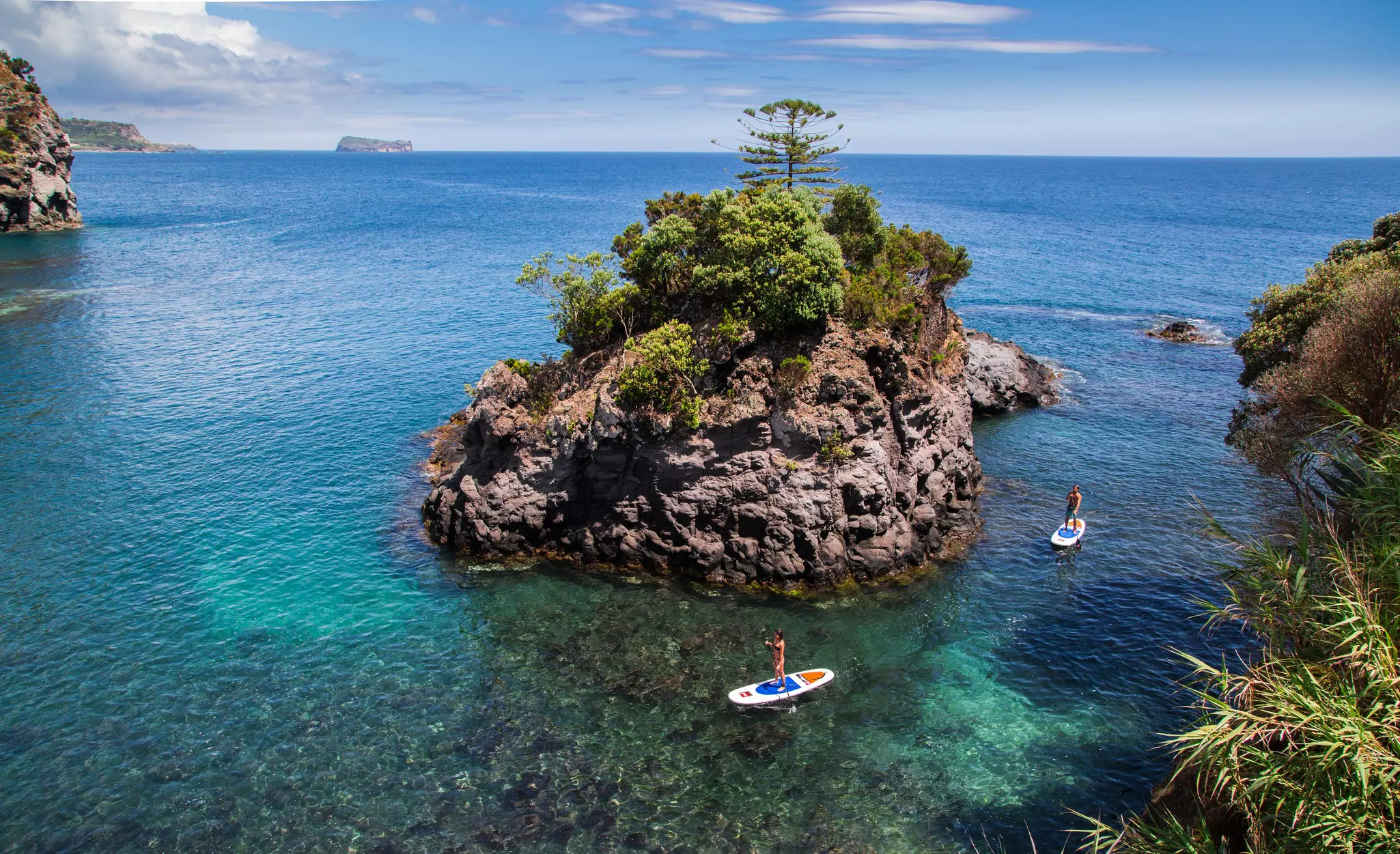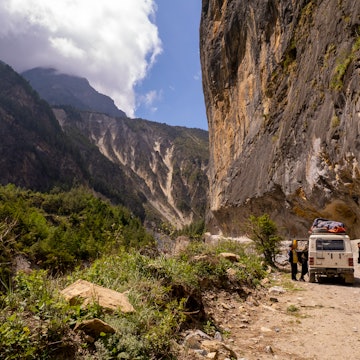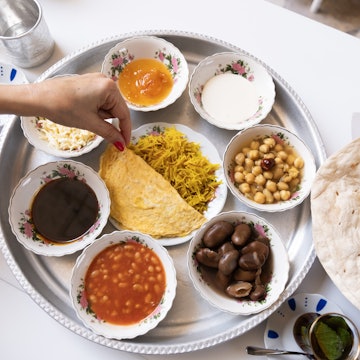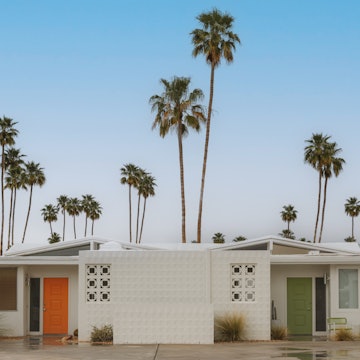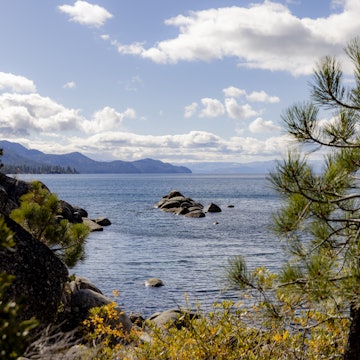
Loved hiking to Machu Picchu? Try the grueling trek to Choquequirao

Jun 24, 2025 • 10 min read
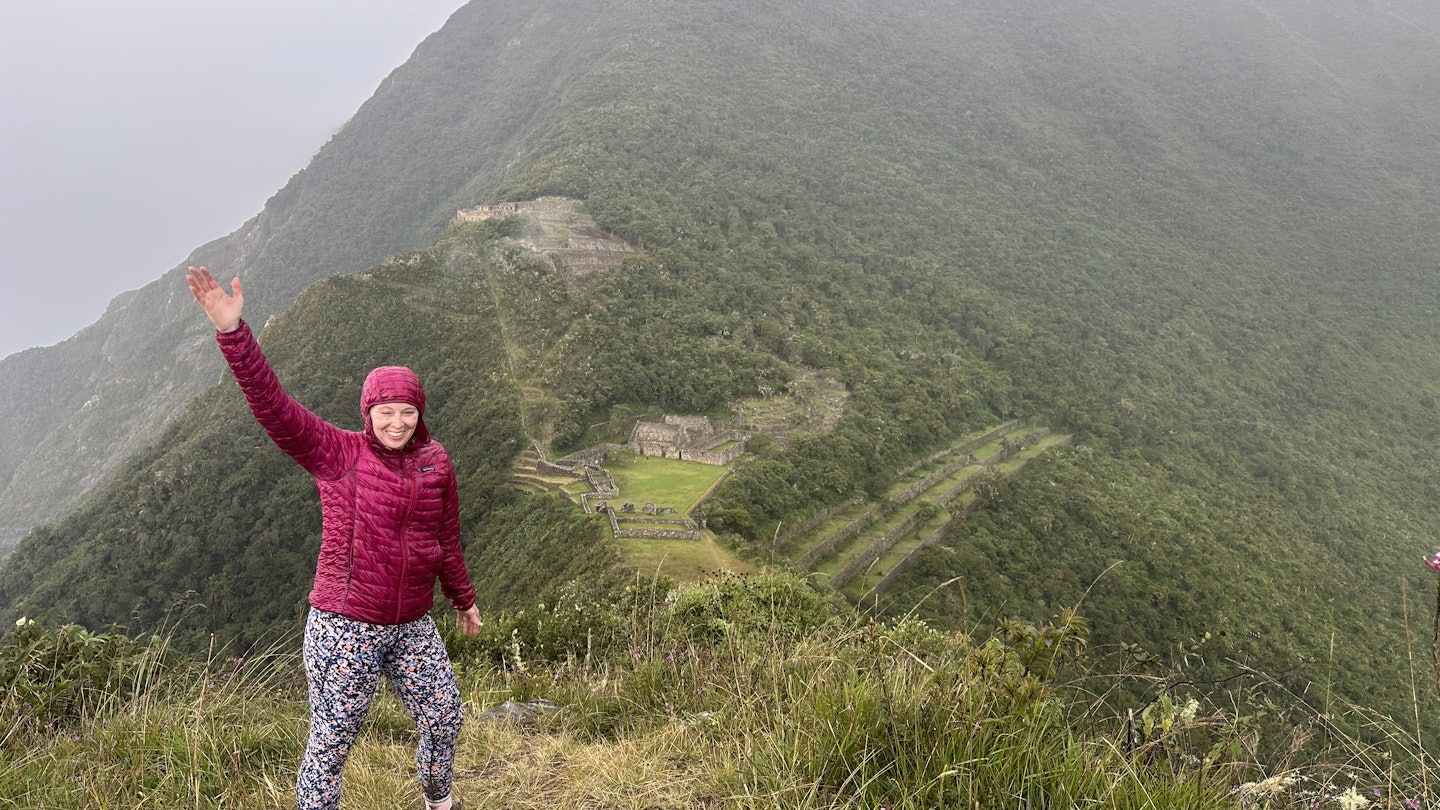
In the pouring rain, Lonely Planet editor Melissa Yeager reaches Choquequirao in Peru. The only way to reach the archeological site is to hike. Melissa Yeager/Lonely Planet
Ever since I opened my sixth grade world history textbook and saw the stunning pictures of Machu Picchu, I’ve wanted to see the empire the Incas built in real life. I still remember how I felt seeing that picture for the first time – how beautiful it looked and how small it made me feel in the context of history and the world.
As a hiker, I've also always wanted to trek the Inca Trail but there was always something throwing off the plans (like a global pandemic).
This year, finally, I rectified the omission of Peru from my travels. But instead of hiking to Machu Picchu, I decided to hike to Choquequirao, an Inca village often referred to as Machu Picchu’s little sister. A friend had put the hike on my radar after he told me he was planning to do it with his family.
The trek seemed like something I would like – a lesser visited place that you have to hike to see, full of beautiful scenery and adventurous trails.
Choquequirao sees as many visitors in a year as Machu Picchu sees in a day. If you’re looking for a challenging hike and an alternative to the crowds along the Inca Trail, this might be one to consider. But it is hard – and this is a collection of my research as well as everything that I wish I had known before I went.
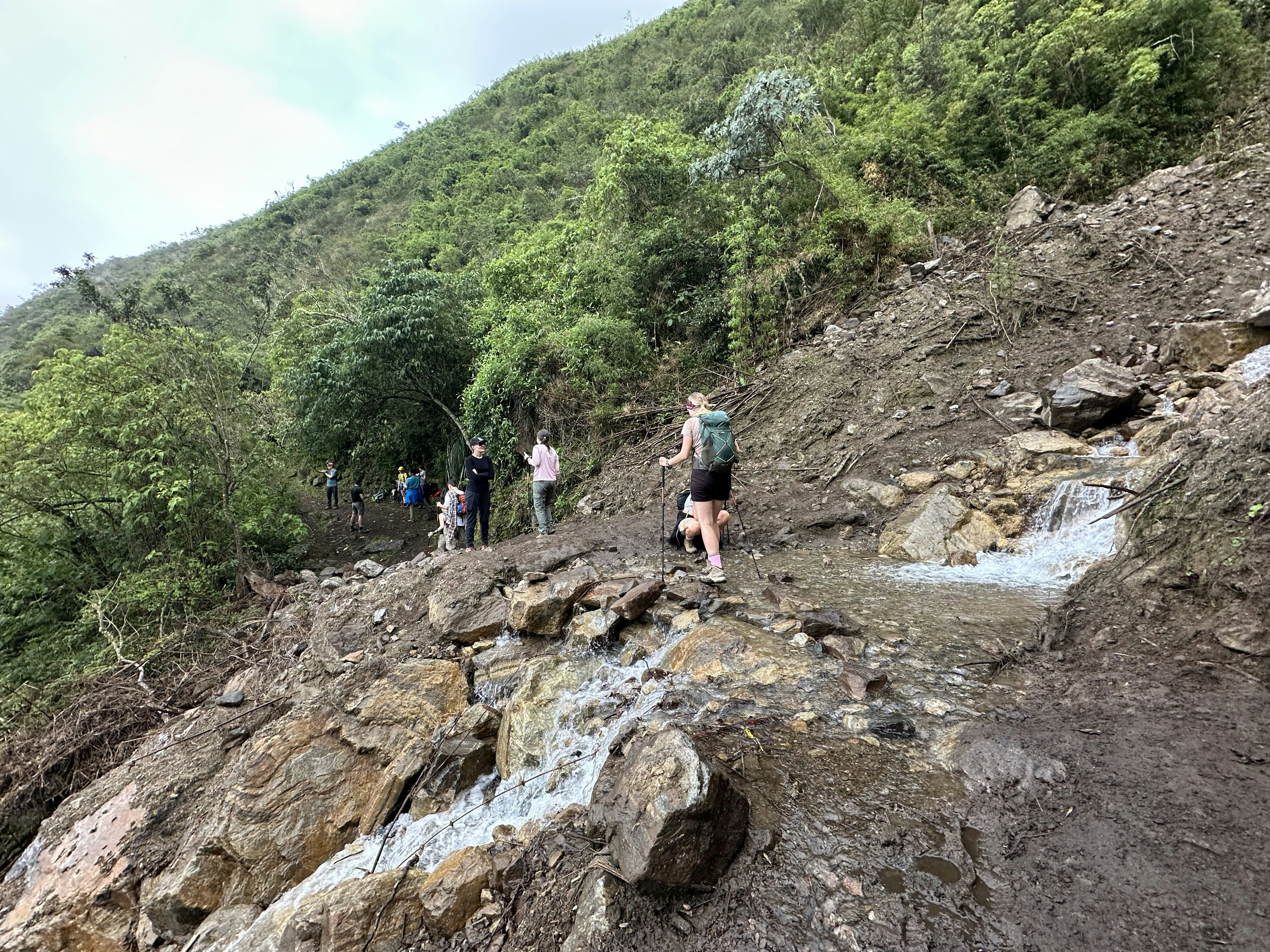
Who should do the hike to Choquequirao?
Listen, this is a challenging hike and it typically involves camping. People in Peru will tell you it is the hardest of the hikes in the country. It doesn’t have the extreme change in elevation of the Inca Trail, but it is down into a canyon with a very steep climb back up into the cloud forest.
You’ll face the elements from direct sun on dry, rocky terrain to rain and muddy paths.
It is a technical hike in terms of the conditions of the trail. It is brutally steep in places. Muddy in others, gravelly and dry in yet other places. You will need your poles and you will have to navigate the trail alongside caravans of horses.
The water is not potable so you’ll need treat yours with a filter or boil it.
Although there were people on our trek who were doing their first multiday hike, I’d say for the most part you should have at least some multiday hiking experience and a solid fitness level before taking this on.
How long does it take? Should I book a tour?
You can do the trek yourself – and I saw plenty of people doing just that – but I recommend booking it with a tour or a guide so you have local knowledge and support on the trail. The tour I booked through GAdventures completed the hike in four days and three nights.
It took the first two days to get to Choquequirao and second two to get back to the beginning.
If I could go back in a time machine and choose again, I would pick a five-day trip so I could enjoy the scenery and pace a bit slower. But I’m a slow hiker who really enjoys taking her time to get to the next stop – so if you are a quicker pace, you might still like the four-day itinerary.
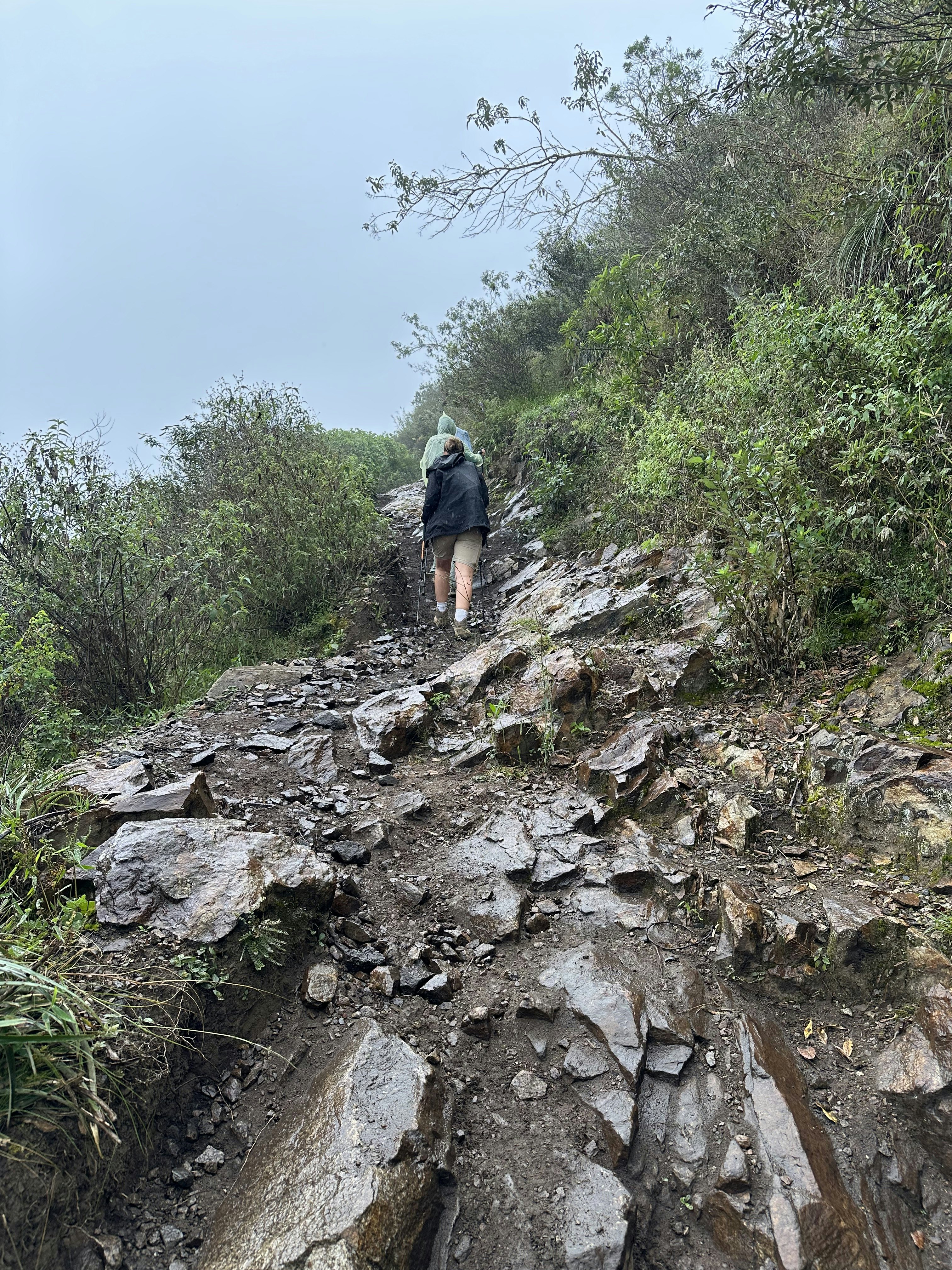
What’s the trail like?
You’ll really trek through all sorts of terrain and weather, which as I said is basically up and down through a canyon.
Some areas of the descent (and later ascent on the third day) are uncovered and the sun beats intensely upon you as you’re trying to carefully make your way down the rock and gravel of the terrain. Make sure you have adequate sun protection.
On the advice of a friend who had done the trek two weeks before me, I packed several long-sleeved sun protection shirts which turned out to be clutch. (He also advised to cut toenails short and bring substantial bug spray. More on that in a bit.)
Again, hiking poles are needed to steady yourself on the trail – and the switchbacks on the ascent on the first and second day are quite brutal. At the end of the first day, the friend I was hiking with and I sat in our tent wondering if we could make it the rest of the way. It did get better but not easier, if that makes any sense.
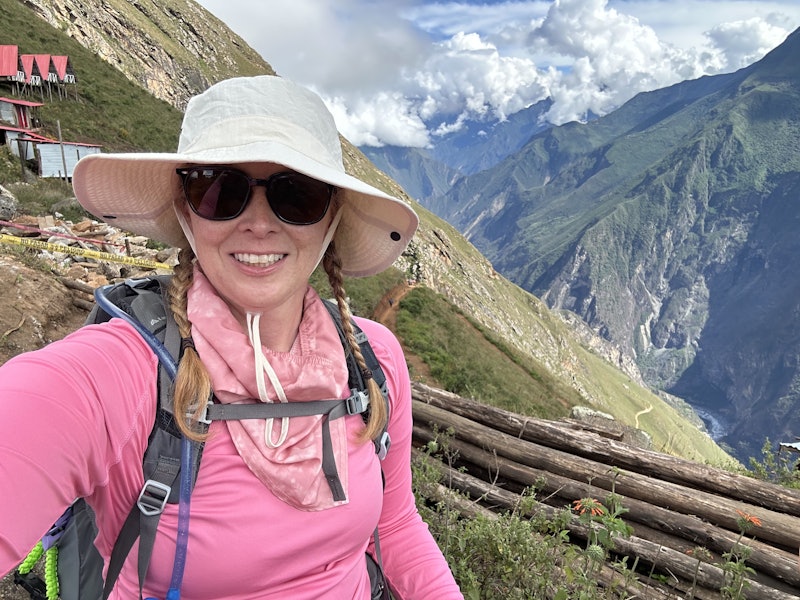
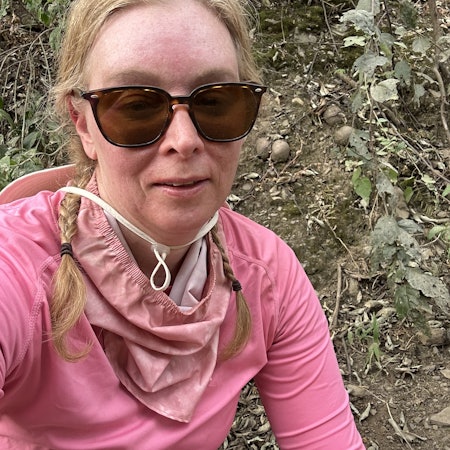
Also, it was quite muddy in some areas on the second and third day. You’ll welcome the rain after that intense section in the sun, but it does make everything slippery.
Finally, I would underscore, it is really, really buggy on the trail. Make sure you pack a legit, strong bug spray. I took OFF bug spray wipes and still had a couple bites – but not as bad as some of the other hikers on the trek who were just covered on every exposed piece of skin in bites.
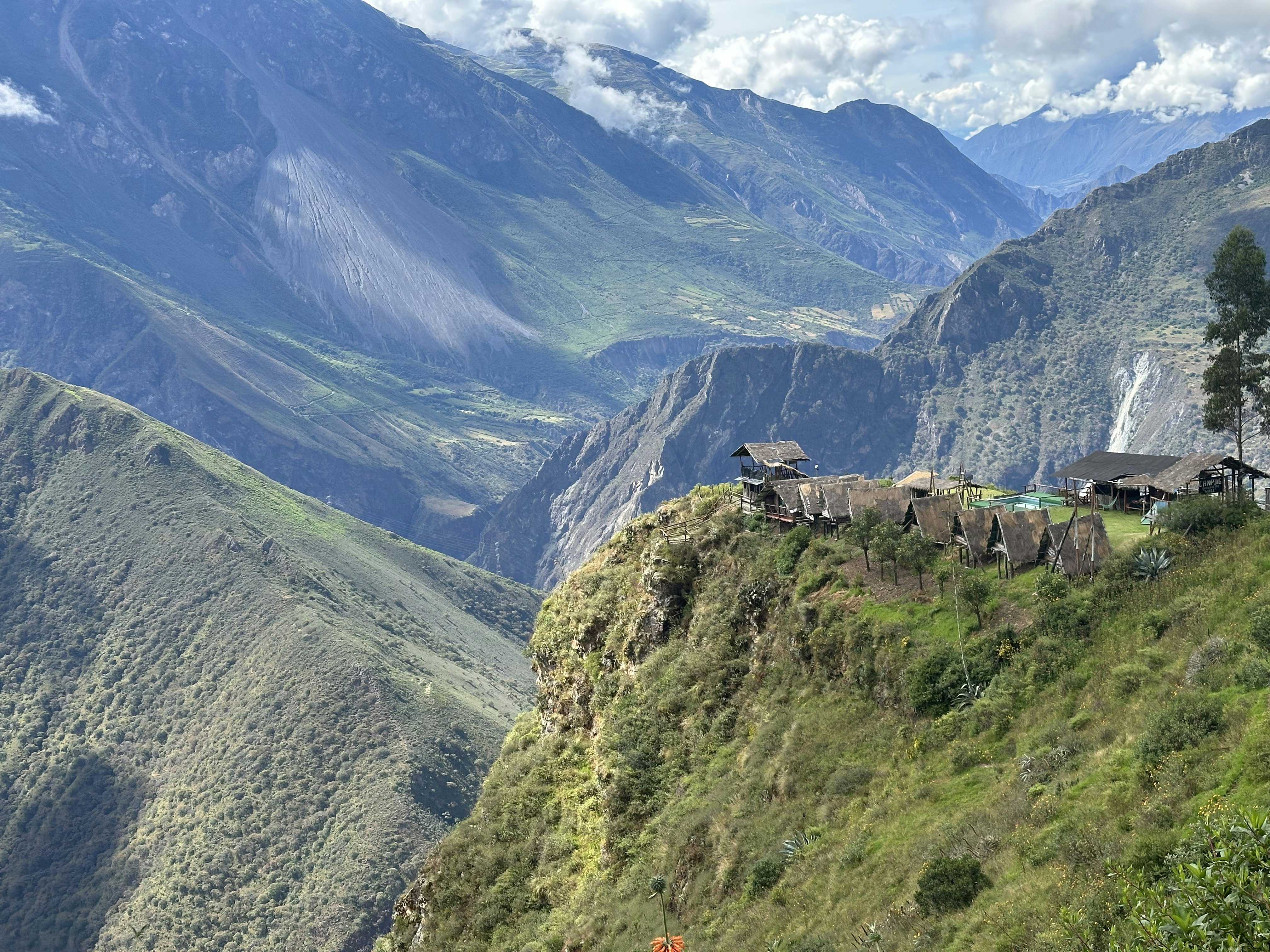
What did you pack for Choquequirao?
I did a lot of research to decide what to take. It’s difficult to pack because you’re limited by the weight of what you can carry and what can be carried for you.
Most tours will provide a tent and sleeping bag for a small fee. I brought my own sleeping bag just because I love mine so much.
So the main large items you need to worry about: your backpack and your hiking shoes. I have learned from experience these are two things you should never go cheap buying. Your back and your feet are liable to give you the most pain on the trail – so make sure you treat them well.
I used my Gregory Jade 28 pack. I’ve had this one for awhile – and had it fitted for me at REI along with my larger Deuter that I used on the Camino de Santiago. If this is your first major hiking trip, I highly recommend investing in a good pack and having it fitted for you in person. Your back will thank you. I own packs from several brands and the key is not paying attention to the brand and finding the right fit for you. Same with hiking shoes. I wore Oboz because I was fitted for them at Arizona Hiking Company and have just stayed loyal to that brand. Your feet (and mileage) may vary so spend the money and get the right fit and pay no attention to the brand name.
Here’s what was inside my pack:
Rain gear to protect your backpack
Toilet kit (hand sanitizer, wet wipes, tissues and a ziplock bag in case you need to pack out)
Sunscreen
Sunscreen lip balm
Sunglasses
Buff (handy for the dust on the trail when horses go by)
First aid kit (among things used: plasters, ibuprofen, probiotics, antidiarrheal meds, bug bite cream)
Patagonia micro puffer coat
Rain coat (The guides also recommended a plastic poncho as additional rain protection.)
Headlamp (Not a flashlight! You’ll need to be hands free.)
Water bladder
Water bottle (I’m paranoid about my water bladder getting a hole in it.)
Water purification tablets
LifeStraw (I know I’m paranoid)
Liquid IV or another electrolyte tablet
Power bank to charge phone to take photos
Cash (Most of the campsites have stores but you’ll need cash.)
Passport
Hat for sun protection
Bug spray (Get a good one.)
Walking poles (rented)
Protein bars and other snackies
What I packed in the duffle to be transported (restricted to 7kg – 15 pounds – including your sleeping bag)
2 long-sleeved sun shirts
2 tanks
Sports bras/undergarments
2 tees
3 pairs of hiking pants/leggings
5 pairs of socks
Small brush
Hair ties
Comb
Earplugs
Quick dry towel
Chacos (sandals/flip flops) to wear as camp shoes/in the shower
Sleeping clothes (I just brought an extra shirt and shorts.)
Sleeping bag
Sleeping bag liner
Toothbrush and toothpaste
Face sunscreen
Face wash
Deodorant (I realize this was a losing battle.)
More snacks (They also serve tea with every meal – so I brought a couple of my favorite mint tea bags as a little treat.)
I brought cards and a travel watercolor kit but never used them because at the end of the day I was so tired that after dinner I went straight to bed. Another person on the trek brought dog poop bags, which were perfect for packing out trash. I normally do this for day hikes and don’t know why I didn’t think of it here.
By the way, the guides advise against using headphones as you need to be able to hear the environment around you like potential rockslides.

Is it worth it?
When I reached Choquequirao, I had about 30 minutes to look at the site. Then the heavens opened up and just poured on us. Still, I was able to walk around this Incan site with few people to interrupt.
If you’re a dedicated hiker, fast or slow, you’ll enjoy the chance to see a part of the Andes few will travel to see and wander Choquequirao without the crowds. It is quite the payoff for an extremely difficult hike.
It’s pretty incredible standing there at the site of an Inca city that hasn’t even been fully uncovered yet, with few people to disturb you as you take it all in.
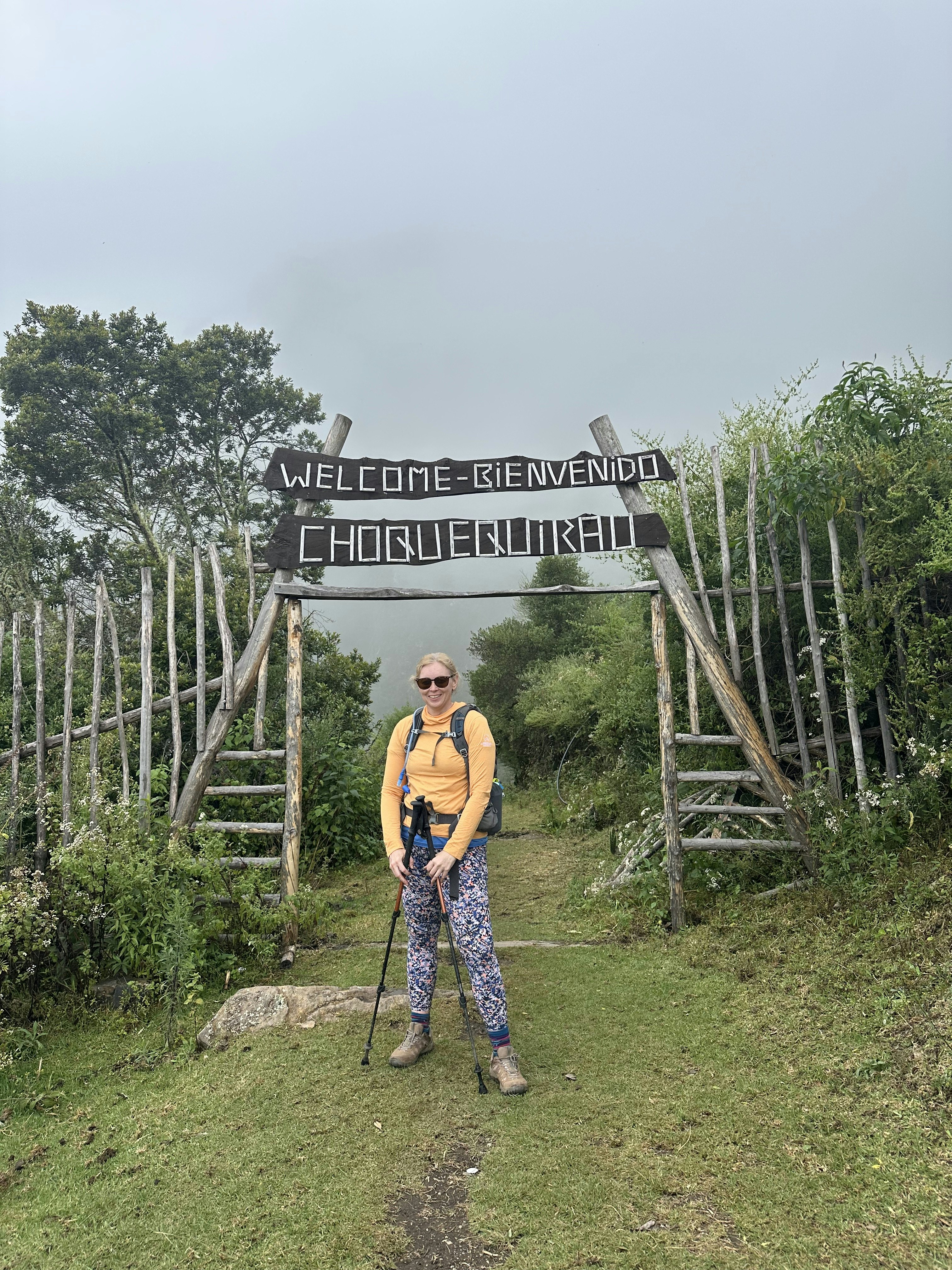
But I would say be realistic about your hiking ability and your expectations of amenities along a hike. The ones along this trek are very basic – though you do have the luxury of a (cold) shower or buying a soda or beer at some stops.

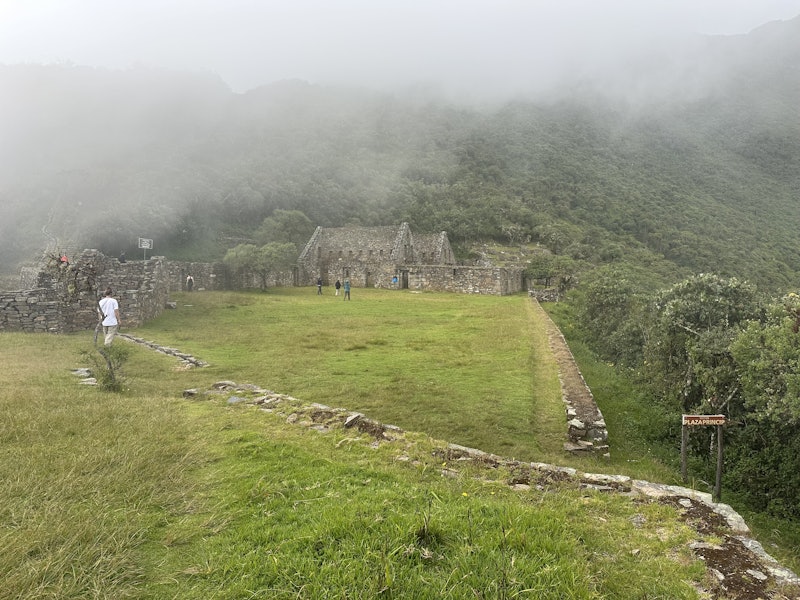
The campsites have incredible views and the Andes are a surreal experience to hike because every direction looks like a painting. My unsolicited two cents: reward yourself after the trek by booking a night or two in Cusco at a great hotel.
I heard they’re building a gondola to Choquequirao?
The gondola has been in the works for a couple decades and when I hiked in late April, early May 2025, I didn’t see any indication that any construction has started in earnest.
The project has faced fierce opposition from the local community who depend on hikers for their livelihoods. Those who live in the towns along the trail sell food and drink, and they offer campsites and the occasional Wi-Fi connection. (Again, bring some cash to buy a drink and support their community.)
They understandably are concerned that a gondola could take that literal foot traffic away from their communities if the archaeological site loses the magic of being only accessible by hiking.

As someone not from that community, my opinion doesn’t matter here. What I can add here after doing the trek is there really is something special about experiencing it through hiking. As someone who enjoys learning about all the different ways people live in this world, it was lovely to see how people live in the Andes along the way. So it seems a shame to bypass these communities.
Perhaps an investment in trail maintenance and in the communities themselves to expand their amenities might be money better spent while also achieving the ultimate goal to relieve some of the overtourism of the main trails to Machu Picchu and divert it to the communities on this trail
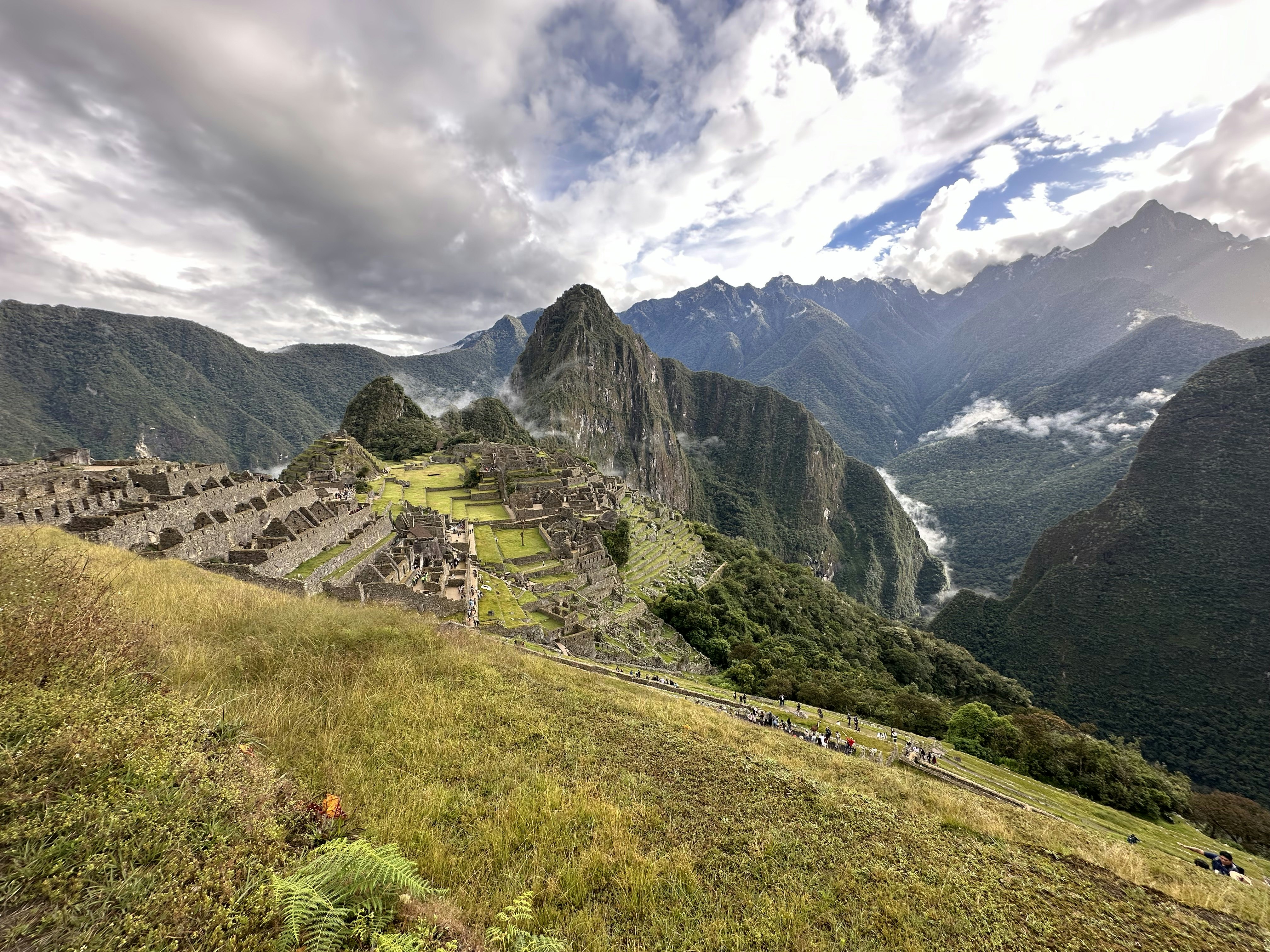
Should I still go to Machu Picchu?
In a word: yes.
I had hoped this would be an article telling you to divert here to avoid the crowds. But I left realizing these should be done in tandem with each other. Most tours to Choquequirao offer options to tag a trip by train on to the end of your tour. Some hikers on my tour took a rest and then hiked the Inca Trail right after.
There’s a reason Machu Picchu is one of the world's wonders. It is quite spectacular to stand there in a place you read about in your world history textbooks as a kid. You can fully imagine how the Incan city used to operate and what a dynamic town it must have been.
If you’re an archeological nerd, you’ll also be fascinated by seeing the difference in architectural styles and learning about the differences between the two cities.
A couple of planning notes: your train ticket or Inca Trail permit is connected to your passport, so you will need to plan in advance if you want to visit. Also, if you get there early in the morning you'll see fewer crowds than if you wait later in the day.


